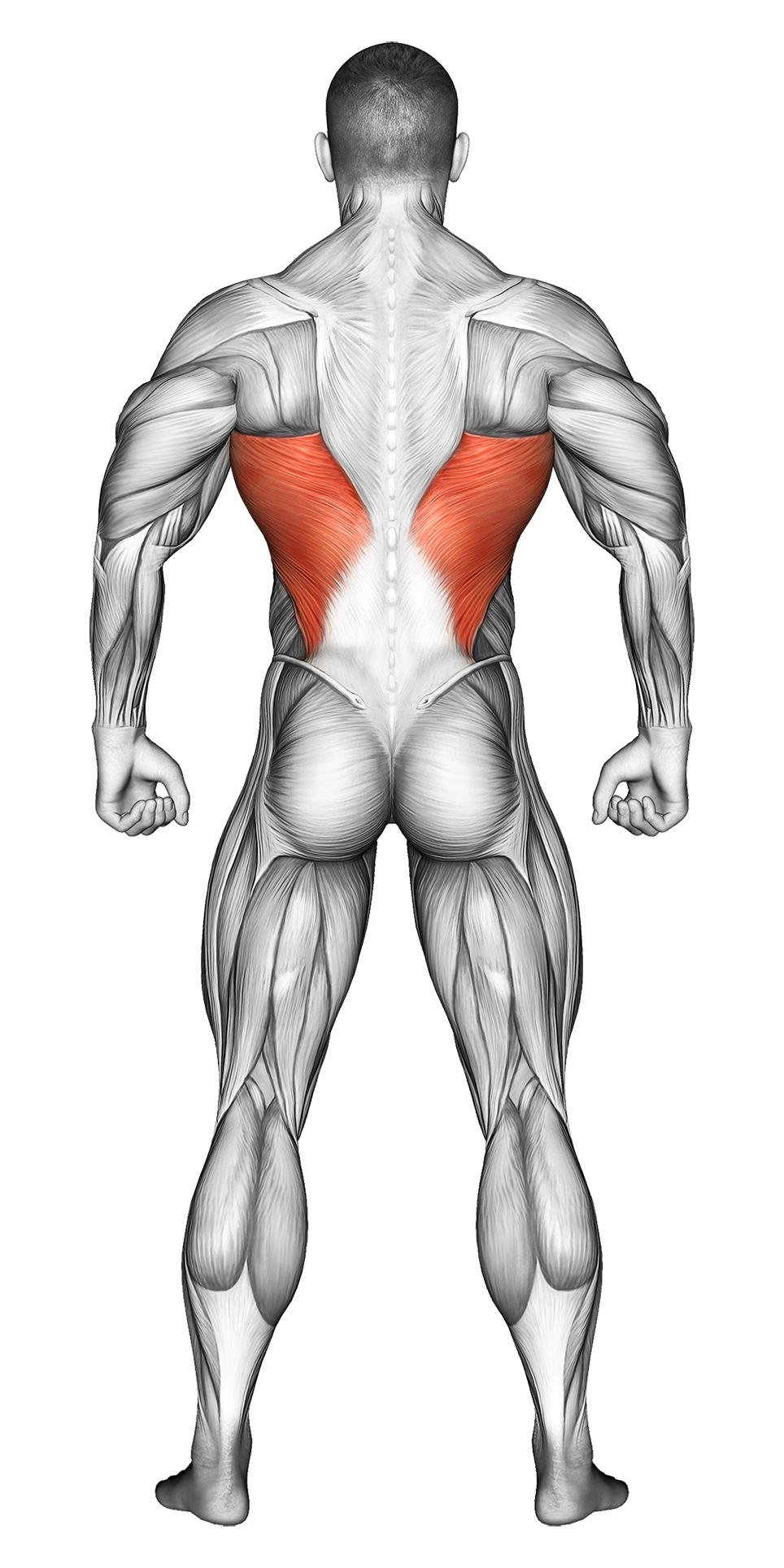Renegade Row: Video Tutorial & Exercise Guide
| Workout | Renegade Row |
| Primary Muscle Group | Lats |
| Secondary Muscle Group | Abs, Biceps, Chest, Traps, Shoulders |
| Equipment Required | Dumbbell |
| Force Type | Pull |
| Mechanics | Compound |
| Exercise Type | Strength |
| Difficulty | Intermediate |
Renegade Row: Video Tutorial & Exercise Guide
How to do Renegade Row – Step-by-Step Guide
- Step 1: Start in a high plank position with a dumbbell in each hand, your arms fully extended, and your feet set slightly wider than shoulder-width apart for stability. Your body should form a straight line from head to heels.
- Step 2: Engage your core, keeping your hips level, and avoid letting them sag or twist. This is your starting position.
- Step 3: While maintaining the plank position, row the dumbbell in your right hand by pulling it up toward your ribcage, leading with your elbow and keeping it close to your body. Focus on squeezing your shoulder blade as you pull.
- Step 4: Lower the dumbbell back to the floor in a controlled manner, returning to the starting position without letting your hips shift.
- Step 5: Repeat the row on your left side. Continue alternating between sides for the desired number of reps while maintaining stability and control throughout the movement.
Renegade Row Overview
The Renegade Row is a full-body exercise that combines a plank with a dumbbell row, targeting multiple muscle groups including the back, shoulders, core, and arms. By performing a row in the plank position, you not only build upper-body strength but also engage your core and stabilizing muscles to maintain balance.
This exercise is great for building functional strength and improving stability, as it challenges your core and upper body simultaneously. The Renegade Row is an ideal addition to any workout routine that focuses on strength, endurance, and core stability.
Benefits of Renegade Row
The Renegade Row targets the upper back, particularly the latissimus dorsi, traps, and rhomboids, while also engaging the shoulders and biceps during the rowing motion. The plank position forces your core to work hard to stabilize your body, improving core strength and endurance.
This exercise also improves balance and coordination, as it requires you to maintain stability while lifting one arm at a time. By engaging multiple muscle groups, the Renegade Row is an efficient full-body exercise that can be used to build both strength and endurance.
Additionally, this movement helps improve shoulder and hip stability, making it beneficial for both athletes and individuals looking to enhance functional strength and mobility.
Renegade Row Pro Tips & Advanced Techniques
Keep your hips level throughout the exercise to avoid twisting or shifting, which reduces core engagement. Focus on pulling the dumbbell up with your back muscles, rather than your arms, to maximize upper back activation. For an extra challenge, slow down the lowering phase or add a push-up between rows to increase intensity. Ready to build strength and stability? Let’s row!
Progression Plan for Renegade Row
| Level | Sets | Reps | Progression Tips |
|---|---|---|---|
| Beginner | 2 | 8-10 per side | Start with lighter dumbbells to master the form and maintain a stable plank position. Focus on keeping your core engaged and preventing your hips from shifting. |
| Intermediate | 3 | 10-12 per side | Increase the weight slightly and maintain control throughout the movement. Try pausing briefly at the top of each row for extra muscle engagement. |
| Advanced | 4 | 12-15 per side | Use heavier dumbbells and slow down the eccentric (lowering) phase to increase time under tension. You can also incorporate a push-up between rows for added intensity. |
Frequently Asked Questions (FAQs) of Renegade Row
What muscles do Renegade Rows target?
This exercise primarily targets the upper back muscles, including the lats, traps, and rhomboids. It also engages the core, shoulders, biceps, and stabilizing muscles in the hips and legs.
Is the Renegade Row suitable for beginners?
Yes, beginners can perform this exercise with lighter weights to focus on form and stability. It’s a great way to build core strength and improve coordination. Modify the movement by widening your stance to help with balance.
How can I make the Renegade Row more challenging?
To increase the difficulty, use heavier dumbbells, add a push-up between rows, or slow down the lowering phase to increase time under tension. You can also narrow your stance to further challenge your core stability.
How often should I include Renegade Rows in my routine?
Include this exercise 2-3 times per week as part of your upper body or full-body workout. It pairs well with other functional movements like push-ups and planks for a complete strength and stability routine.
What common mistakes should I avoid?
Avoid letting your hips sag or rotate during the row. Focus on maintaining a stable plank position and using your back muscles to pull the dumbbell rather than relying on your arms or shoulders.
SHARE ON





